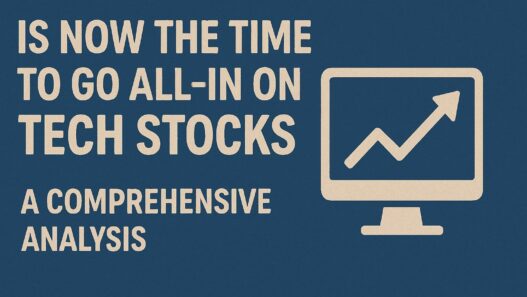Building lasting wealth starts with more than chasing high returns; it requires a clear vision and disciplined actions. Without a plan and the right financial habits, even smart opportunities can fall short.
Whether you're aiming for generational wealth or refining an existing portfolio, mastering these fundamentals creates a runway for sustainable growth, stability, and peace of mind.
In this guide, you will discover key investment tips and wealth-building strategies so you can:
- Define and track SMART financial goals
- Build a budget that balances needs, wants, and savings
- Strengthen your credit score for better borrowing power
- Manage debt with targeted payoff approaches
- Add stability with precious metals as a core asset
- Diversify across stocks, bonds, real estate, and alternative investments
- Optimize tax efficiency and protect your assets
- Leverage compound growth through automation and discipline
- Monitor performance, rebalance, and adjust as life changes
Each section offers practical steps and clear explanations so you can apply these principles immediately.
Ready to lay the groundwork for a resilient, growth-focused portfolio? Let's start by establishing your financial bedrock, learning how to build wealth through goals, budgeting, and credit.
1. Establish Your Financial Bedrock: Goals, Budgeting, and Credit
A strong financial foundation is a key wealth-building strategy. It starts with a clear plan, a realistic budget, and solid credit. In this section, you will set SMART goals, track income and expenses, and improve credit health. These steps prepare you for a good investment strategy and set the groundwork for generational wealth.
Setting SMART financial goals
Define what you want and when you want it. Use SMART criteria:
- Specific: Pinpoint the exact amount and purpose, like a down payment or an emergency fund.
- Measurable: Assign numbers and deadlines.
- Achievable: Align with your income and risk tolerance.
- Relevant: Link goals to long-term objectives, such as retirement or diversifying with precious metals.
- Time-bound: Set 5-, 10-, or 20-year milestones.
Using SMART goals is one of the best ways to generate wealth quickly, because it focuses your savings and investment plan.
Tracking income and expenses
Follow the 50/30/20 rule:
- 50% on needs
- 30% on wants
- 20% on savings and debt repayment
Start with a $500 emergency fund, then build to one month of living costs. Budgeting tools or a simple spreadsheet can reveal extra cash. Redirect these funds toward savings or a good investment to accelerate wealth-building.
Understanding credit scores and credit checks
Your credit score reflects your borrowing risk. Lenders use hard inquiries to set loan rates and terms. A higher score means lower interest and more financing options for assets like real estate, which is part of a good investment strategy.
Strategies to improve credit health
- Pay all bills on time
- Keep utilization below 30%
- Avoid unnecessary hard inquiries
- Consider debt consolidation to simplify repayment
Strong credit reduces borrowing costs and supports your long-term growth. With clear goals, a solid budget, and healthy credit, you prepare your portfolio for the next level of wealth creation.
2. Manage Debt Strategically
Debt can support growth or erode it, depending on how you handle it. A good investment strategy considers the cost of each obligation. In this section, learn to differentiate good debt from bad, pick a payoff method, and use low-rate loans to enhance your portfolio's growth.
Differentiating Good Debt from Bad Debt
Good debt finances appreciating assets, like a mortgage or low-interest student loans. Bad debt stems from high-rate credit cards or variable-rate loans on items that quickly lose value. Review each balance by interest rate and collateral. Prioritize high-rate debt to prevent fees from eating into your returns.
Snowball vs Avalanche Payoff Methods
- Snowball: Focus on the smallest balance first to build momentum.
- Avalanche: Target the highest interest rate to minimize total interest paid.
Choose the method that fits your cash flow and keeps you motivated.
Using Low-Interest Loans for Wealth Opportunities
Low-rate borrowing can free up cash for higher-return investments. Before paying off a low-rate mortgage, assess the opportunity cost of investing extra funds in a retirement or brokerage account. Refinancing to a lower rate or shorter term can lower costs. Automate surplus transfers that split funds between debt repayment and investments. This dual approach supports debt reduction and compound growth.
3. Invest in Foundational Assets: Precious Metals
Including precious metals in your portfolio can boost diversification. Gold, silver, and platinum often move independently of stocks and bonds. They serve as a hedge against inflation and geopolitical risk.
Why precious metals matter
Precious metals have a long history of preserving value. Gold generally keeps pace with inflation, silver combines industrial demand with monetary use, and platinum's limited supply can drive high returns when markets tighten. These assets contribute to a balanced, good investment strategy.
Optimal allocation for stability and growth
Consider dedicating a portion of your portfolio to metals:
- Gold: 5% to 15% for inflation protection
- Silver: 1% to 5% for upside potential
- Platinum: 0.5% to 2% as a tactical holding
Adjust based on your risk profile and market outlook. These ranges are a core wealth-building strategy for stability.
Physical vs paper ownership
Physical bullion
- Pros: Direct control, no counterparty risk
- Cons: Storage expenses, insurance premiums
Paper metals (ETFs, futures)
- Pros: High liquidity, low custody fees
- Cons: Counterparty exposure, margin requirements
Storage and liquidity options
Storage choices include:
- Allocated vaults with segregation and insurance
- Unallocated accounts with pooled holdings and lower fees
- Home or bank safe deposit box for small amounts
When you need liquidity, sell through reputable dealers or online platforms. Always consider bid-ask spreads and potential fees when you plan to liquidate metal positions.
4. Diversify with Traditional and Alternative Investments
Diversification is a cornerstone of any good investment strategy. Spreading risk across equities, bonds, real estate, and alternative assets can reduce volatility and enhance risk-adjusted returns. Tailor your allocations to your time horizon and risk tolerance, then rebalance regularly to stay aligned with your goals.
Stocks and Bonds Fundamentals
Balance growth and income by combining:
- Equities: Higher long-term return potential, more price swings in the short term.
- Bonds: Predictable income, capital preservation, lower volatility.
Adjust bond duration and credit quality to match your income needs and risk profile.
Real Estate and REITs
Real assets add tangible value and inflation protection:
- Direct real estate: Rental revenue, full control, less liquidity.
- Equity REITs: Publicly traded, diversified exposure, regular dividends.
Real estate is one of the best ways to generate wealth over time.
Mutual Funds, ETFs, and Index Funds
Instant diversification at a low cost:
- Mutual funds: Active management, potentially higher fees.
- ETFs: Trade like stocks, generally with low expense ratios.
- Index funds: Passive, low tracking error, tax efficient.
These vehicles support efficient wealth building without picking individual securities.
Alternative Assets
For non-correlated return sources, consider:
Crypto
Digital tokens with high volatility. Limit allocations to manage risk while capturing potential upside.
Private Equity and Collectibles
Venture capital, private funds, art, and collectibles offer higher expected returns over longer lock-up periods. Rigorous due diligence and manager selection are essential for success.
Periodic Rebalancing
Review your portfolio every six to twelve months or if any asset class drifts by more than 5%. Selling overweight positions and adding to underweight areas locks in gains and helps you avoid emotion-driven risk. Regular rebalancing is a key wealth-building strategy.
5. Optimize Tax Efficiency and Protect Assets
Minimizing taxes and safeguarding your assets are critical wealth-building strategies. Smart tax planning and insurance can boost after-tax returns and protect your portfolio against unexpected events.
Tax-Advantaged Vehicles
Use tax-favored accounts to defer or eliminate taxes on earnings:
- 401(k) and traditional IRA: Tax-deferred growth.
- Roth IRA: Tax-free withdrawals.
- HSA: Contributions are deductible, and withdrawals for medical expenses are tax-free.
These vehicles are essential for building wealth efficiently.
Asset Location Strategies
Place income-generating assets, like bonds and high-dividend stocks, in tax-deferred accounts. Hold high-growth, non-dividend equities in taxable accounts to delay capital gains and minimize annual tax drag.
Insurance Essentials
Protect your financial plan with:
- Life insurance: Replaces income and covers final expenses.
- Disability insurance: Guards against loss of earning power.
- Property insurance: Insures vaults or storage against theft or damage.
Insurance is an investment tip for risk management in your overall strategy.
Basic Estate Planning Tools
Create a will and designate beneficiaries to transfer assets smoothly. Consider revocable trusts, durable powers of attorney, and annual gift exemptions to reduce estate taxes and avoid probate. Estate planning is one of the best ways to generate wealth for future generations.
6. Harness Compound Growth and Discipline
Compound interest drives wealth creation by earning returns on both principal and past gains. For example, a 25-year-old investing $500 per month at a 6% annual return can reach $1 million by age 65. Conversely, debt interest compounds against you. To estimate doubling time, divide 72 by your expected annual return.
Automating Savings and Investments
Automate recurring transfers into a 401(k), IRA, brokerage account, or precious metals ETF. Automation removes emotion and enforces consistency. Even modest monthly contributions, such as $100 from age 25 to 65 at a 7% return, can grow to nearly $190,000 on just $48,000 of deposits. This is one of the best ways to generate wealth over time.
Dollar-Cost Averaging Benefits
Dollar-cost averaging means investing a fixed amount at regular intervals. You buy more shares when prices are low and fewer when prices are high. This approach smooths market volatility, reduces timing risk, and supports disciplined investing. Consistency in your strategy can enhance compound growth and long-term success.
7. Monitor, Review, and Adjust Your Plan
Regular monitoring is essential for effective wealth-building strategies. Frequent check-ins help you stay on course, catch issues early, and adapt to life changes.
Key performance indicators
Track the metrics that matter:
- Net worth changes via a personal balance sheet
- Portfolio return, drawdown, and volatility
- Credit score shifts and debt-to-income ratio
When and how to rebalance
Review allocations every 6 to 12 months, or if any asset class drifts by more than 5%. After major life events, such as a career change or home purchase, perform an additional review. Use calendar reminders for bill payments to avoid late fees and keep your financial plan on track.
Avoiding emotion-driven decisions
Anchor your choices to core objectives and revisit your “why” often. A clear plan helps you avoid panic selling in volatile markets and reinforces your focus on long-term growth and wealth-building.
Working with advisors safely
Seek fee-based Registered Investment Advisers (RIAs) who have a fiduciary duty. Ask about their compensation methods, service scope, and watch for red flags like guaranteed returns or vague fee disclosures. Review statements monthly and consult professionals as needed to ensure your strategy aligns with evolving goals.
Final Words
Building sustainable wealth creation begins with a strong foundation and grows through disciplined, consistent action. Here are the key takeaways and wealth-building strategies:
- Define SMART goals to guide savings and good investment choices
- Create a budget that balances needs, wants, and savings
- Maintain a healthy credit score for favorable borrowing terms
- Tackle high-cost debt first and use low-rate loans strategically
- Hold precious metals for stability and inflation protection
- Diversify across stocks, bonds, real estate, and alternative assets
- Optimize tax efficiency with the right account types and asset location
- Automate contributions to harness compound growth
- Monitor performance, rebalance on schedule, and adjust after life changes
These steps represent some of the best ways to generate wealth and set you on the path to generational wealth. By applying each principle, you build a resilient portfolio that adapts to market shifts and personal milestones.
Start today by reviewing your goals, fine-tuning your budget, or setting up your next automated transfer. With clarity, consistency, and commitment, you'll make real progress on how to build wealth and enjoy financial peace of mind.
About the Author:
Megan Isola holds a Bachelor of Science in Hospitality and a minor in Business Marketing from Cal State University, Chico. She enjoys going to concerts, trying new restaurants, and hanging out with friends.
The post The Foundations of Wealth: What Every Investor Should Consider appeared first on MoneyMiniBlog.



















